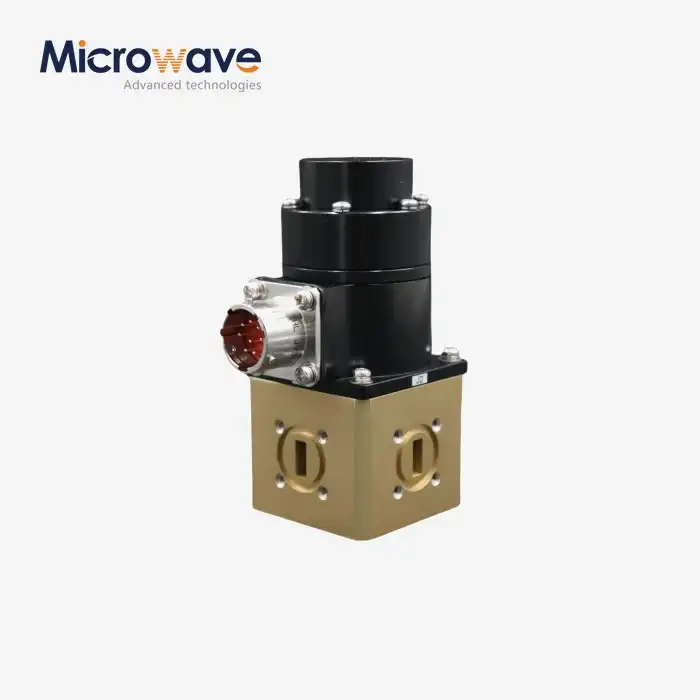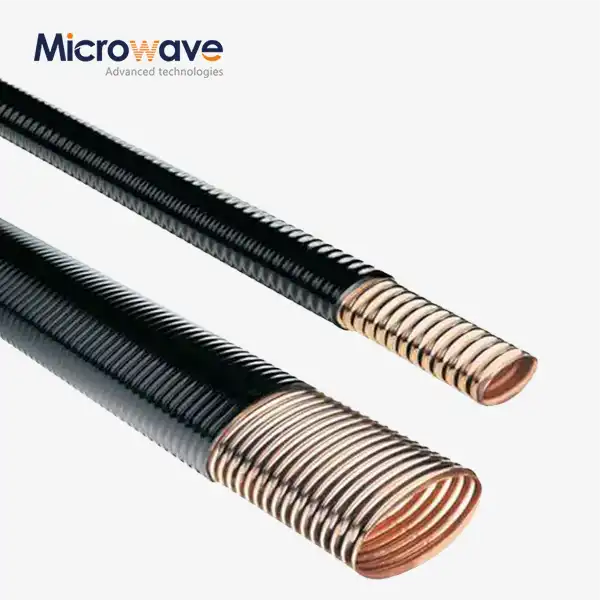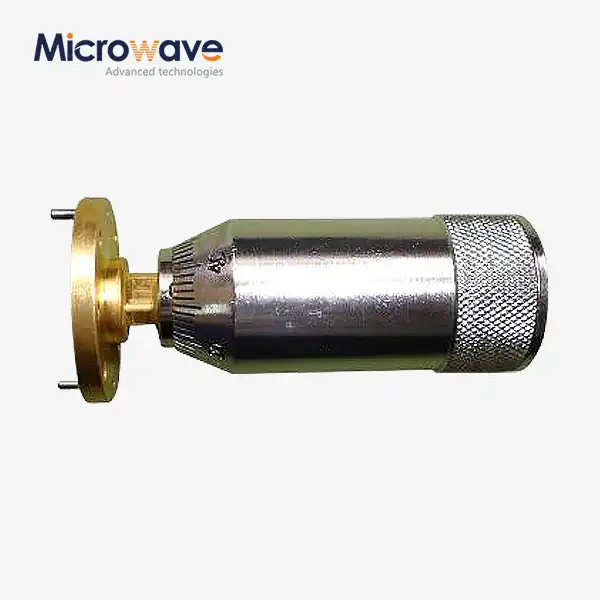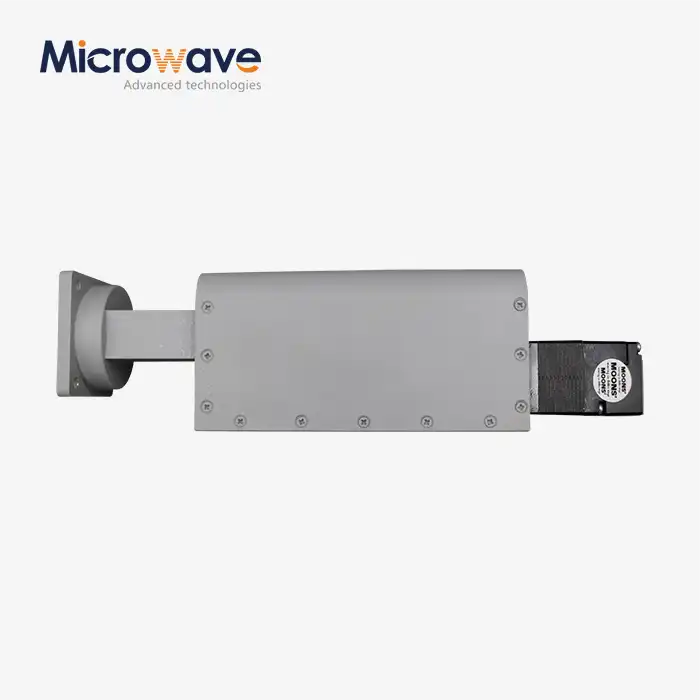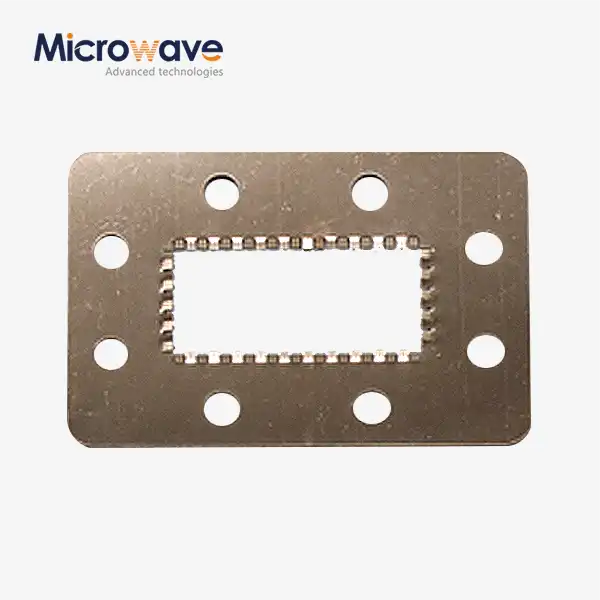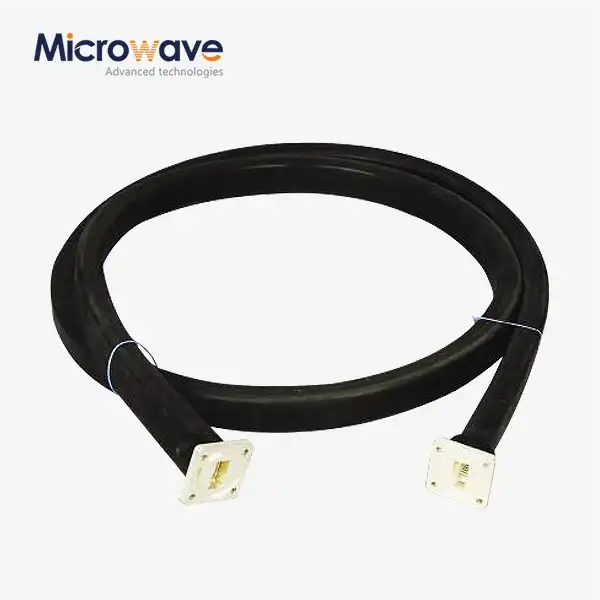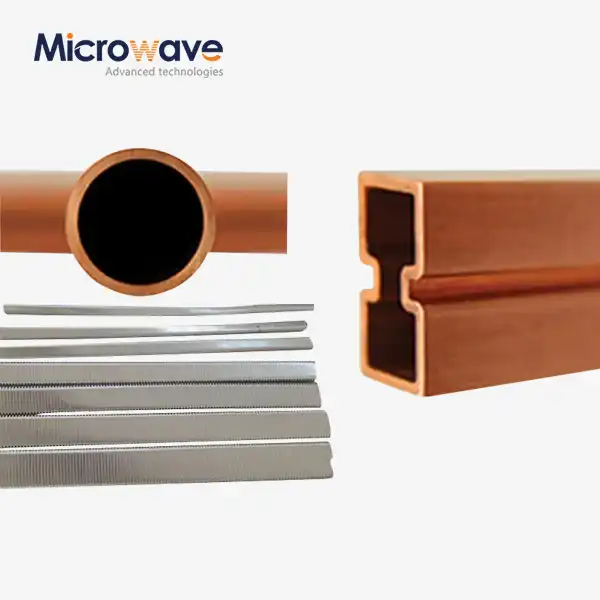What Materials Are Commonly Used to Manufacture Waveguide Flange Gaskets?
Waveguide flange gaskets are critical components in microwave and radio frequency (RF) systems, serving as the interface between waveguide sections to ensure proper signal transmission. The choice of material for these gaskets significantly impacts system performance, reliability, and longevity. Commonly used materials for manufacturing Waveguide Flange Gaskets include conductive elastomers, beryllium copper alloys, silver-plated brass, aluminum, conductive silicone compounds, and specialized polymer composites. Each material offers distinct advantages depending on the application requirements, including frequency range, power handling capability, environmental conditions, and budgetary constraints. The optimal material selection ensures minimal signal loss, excellent RF shielding, adequate pressure distribution, and resistance to environmental factors that could compromise system integrity.
Key Material Options for Waveguide Flange Gaskets
Conductive Elastomers
Conductive elastomers represent one of the most versatile material choices for Waveguide Flange Gaskets in modern microwave applications. These specialized compounds combine the flexibility and resilience of elastomeric materials with electrically conductive properties necessary for effective RF sealing. At Advanced Microwave Technologies Co., Ltd., our high-grade conductive elastomer gaskets provide excellent compression recovery and maintain consistent electrical conductivity across the entire flange interface. The elastomer base material, typically silicone or fluorosilicone, offers temperature stability from -55°C to 125°C, making these Waveguide Flange Gaskets suitable for aerospace and defense applications where environmental extremes are common. The conductive particles—usually silver, silver-plated aluminum, or silver-plated copper—are uniformly distributed throughout the elastomer matrix, ensuring consistent electrical performance even after repeated compression cycles. These gaskets excel in applications requiring frequent assembly and disassembly, as they resist taking a permanent set and maintain their sealing properties over extended periods. Additionally, our elastomer-based Waveguide Flange Gaskets provide effective vibration damping, which is particularly valuable in mobile or airborne systems where mechanical stress could otherwise compromise signal integrity.
Beryllium Copper Alloys
Beryllium copper (BeCu) alloys stand out as premium materials for Waveguide Flange Gaskets in high-performance microwave systems. These alloys combine exceptional mechanical properties with excellent electrical conductivity, making them ideal for applications where signal integrity is paramount. BeCu gaskets manufactured by Advanced Microwave Technologies Co., Ltd. feature precision-engineered finger stock designs that provide multiple contact points around the waveguide perimeter, ensuring complete electrical continuity across the flange interface. The inherent spring characteristics of beryllium copper allow these Waveguide Flange Gaskets to maintain consistent contact pressure even under thermal cycling conditions, a critical factor in maintaining stable RF performance over time. With a temperature capability exceeding that of many elastomer-based options, BeCu gaskets operate reliably in environments ranging from cryogenic temperatures to over 300°C. The natural corrosion resistance of these alloys, often enhanced through gold or silver plating, ensures long-term performance reliability in challenging environments. Our manufacturing process for BeCu Waveguide Flange Gaskets includes precise heat treatment protocols that optimize the material's mechanical properties without compromising its electrical conductivity, resulting in gaskets that maintain their performance characteristics throughout the operational lifetime of the waveguide system.
Wire Mesh Composites
Wire mesh composite gaskets represent an innovative solution for Waveguide Flange Gaskets in applications requiring both flexibility and excellent conductivity. These gaskets consist of knitted wire mesh, typically made from materials such as monel, aluminum, or silver-plated copper, embedded in an elastomer carrier for ease of handling and installation. The multi-point contact nature of wire mesh provides exceptional RF shielding effectiveness across a broad frequency spectrum, making these Waveguide Flange Gaskets particularly suitable for broadband applications up to 110 GHz. Advanced Microwave Technologies Co., Ltd. offers these gaskets in both D-type and O-type configurations to accommodate various standard waveguide sealing flanges. The resilient nature of knitted wire mesh allows these gaskets to conform to surface irregularities while maintaining consistent contact pressure, effectively compensating for flange surface imperfections that might otherwise create gaps in the RF seal. The combination of metal wire and elastomer carrier creates a gasket with dual sealing functionality—electromagnetic sealing through the conductive mesh and environmental sealing via the elastomer component. This dual-purpose design makes wire mesh composite Waveguide Flange Gaskets particularly valuable in outdoor installations or harsh environments where moisture ingress could compromise system performance. Our manufacturing process ensures precise density control of the wire mesh, balancing compression force requirements against shielding effectiveness to create gaskets optimized for specific application requirements.

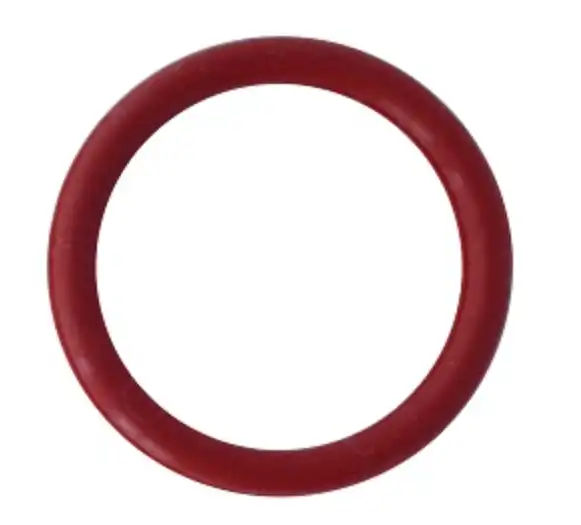
Manufacturing Considerations for Gasket Materials
Precision Tolerance Requirements
The manufacturing of Waveguide Flange Gaskets demands exceptional precision to ensure optimal performance in microwave systems. Tolerance control represents one of the most critical aspects of gasket production, directly impacting the electrical and mechanical performance of the final assembly. Advanced Microwave Technologies Co., Ltd. implements rigorous quality control processes that maintain dimensional tolerances within ±0.025mm for critical dimensions, ensuring consistent performance across production batches. This precision is particularly important for Waveguide Flange Gaskets used in high-frequency applications, where even minor dimensional variations can significantly impact impedance matching and introduce unwanted signal reflections. Our manufacturing facilities utilize advanced CNC machining equipment and specialized tooling designed specifically for gasket production, allowing us to consistently achieve the required precision. For conductive elastomer gaskets, the molding process is carefully controlled to ensure uniform material distribution and consistent electrical properties throughout the gasket. The compression set characteristics of elastomer-based Waveguide Flange Gaskets are carefully engineered to provide adequate sealing force while preventing over-compression that could damage the gasket or the mating flange surfaces. Through comprehensive in-process inspection and final verification using coordinate measuring machines, we ensure that every Waveguide Flange Gasket meets the dimensional specifications required for optimal performance in its intended application.
Surface Treatment and Plating Options
Surface treatments and plating technologies play a crucial role in enhancing the performance and durability of Waveguide Flange Gaskets. These processes not only improve electrical conductivity but also provide essential protection against environmental factors that could compromise gasket integrity. Advanced Microwave Technologies Co., Ltd. offers a comprehensive range of surface treatment options, including silver, gold, tin, and nickel plating, each providing specific benefits depending on the application requirements. Silver plating offers superior electrical conductivity, making it ideal for Waveguide Flange Gaskets used in high-frequency applications where signal loss must be minimized. Gold plating provides excellent corrosion resistance while maintaining good conductivity, making it suitable for gaskets deployed in hostile environments or where long-term reliability is paramount. Our plating processes are carefully controlled to ensure uniform coverage and adherence to thickness specifications, typically ranging from 0.5 to 5 microns depending on the application requirements. For metallic Waveguide Flange Gaskets, surface passivation treatments may be applied to enhance corrosion resistance without compromising electrical performance. In applications where galvanic compatibility is a concern, we can recommend and supply gaskets with appropriate plating combinations to prevent accelerated corrosion due to dissimilar metal contact. Our engineering team can provide guidance on selecting the optimal surface treatment for specific operational conditions, balancing performance requirements against cost considerations to deliver the most effective solution for each application.
Environmental and Compliance Factors
Environmental considerations and regulatory compliance have become increasingly important factors in the selection and manufacturing of Waveguide Flange Gaskets. As global regulations continue to evolve, material choices that meet both performance requirements and compliance standards are essential for manufacturers and end-users alike. Advanced Microwave Technologies Co., Ltd. maintains comprehensive compliance with international standards, ensuring that our Waveguide Flange Gaskets meet applicable regulatory requirements without compromising performance. All our gasket products are RoHS compliant, free from restricted substances such as lead, mercury, and hexavalent chromium, making them suitable for use in environmentally sensitive applications. Our manufacturing processes conform to ISO:9001:2008 quality management standards, ensuring consistent product quality and traceability. For applications in extreme environments, we offer specialized Waveguide Flange Gaskets with enhanced resistance to ozone, UV exposure, salt spray, and chemical contaminants, ensuring reliable performance even under challenging conditions. The temperature rating of our gaskets, typically ranging from -55°C to 125°C for standard products, can be extended through specialized material formulations for applications with more extreme thermal requirements. Oxygen compatibility, outgassing characteristics, and radiation resistance are additional factors considered in our material selection process for specialized applications in aerospace, medical, or nuclear environments. Through continuous monitoring of regulatory developments and proactive material research, we ensure that our Waveguide Flange Gaskets remain compliant with current and emerging environmental standards while meeting the performance expectations of our customers.
Application-Specific Material Selection
High-Frequency Performance Materials
The selection of materials for Waveguide Flange Gaskets becomes increasingly critical as operating frequencies push into the millimeter-wave range. At these higher frequencies, material properties such as conductivity, surface finish, and dimensional stability have profound effects on signal integrity and overall system performance. Advanced Microwave Technologies Co., Ltd. specializes in high-frequency applications, offering Waveguide Flange Gaskets specifically engineered for optimal performance at frequencies up to 110 GHz. For these demanding applications, we typically recommend silver-plated beryllium copper or specialized silver-loaded silicone compounds that maintain consistent electrical properties across broad frequency ranges. The skin effect phenomenon, which causes RF current to flow primarily at the conductor surface at high frequencies, makes surface conductivity particularly important for these applications. Our high-frequency Waveguide Flange Gaskets feature carefully controlled surface roughness parameters, typically achieving Ra values below 0.4 micrometers to minimize insertion loss and reflection. Material homogeneity becomes especially important at millimeter-wave frequencies, as any inconsistencies in conductive particle distribution can create localized impedance variations that degrade signal quality. The dimensional stability of gasket materials under thermal cycling conditions is another critical consideration for high-frequency applications, as even minor changes in gasket geometry can significantly impact electrical performance. Through careful material selection and specialized manufacturing processes, Advanced Microwave Technologies ensures that our high-frequency Waveguide Flange Gaskets maintain consistent performance characteristics throughout their operational lifetime, providing reliable signal integrity in even the most demanding applications.
Space and Defense Applications
The extreme operating conditions encountered in space and defense applications impose unique requirements on Waveguide Flange Gaskets, necessitating specialized materials and manufacturing approaches. Advanced Microwave Technologies Co., Ltd. has extensive experience providing gaskets for these demanding sectors, where reliability under extreme conditions is non-negotiable. For space applications, outgassing characteristics become a primary concern, as volatile compounds released from standard materials can condense on sensitive optical surfaces or electronic components. Our space-grade Waveguide Flange Gaskets utilize low-outgassing materials that meet NASA specifications, ensuring compatibility with vacuum environments. Radiation resistance represents another critical requirement for space and certain defense applications, as standard elastomers may degrade when exposed to the radiation environments encountered in orbit or in proximity to nuclear materials. We offer radiation-hardened gasket options that maintain their mechanical and electrical properties even after exposure to significant radiation doses. The extreme temperature cycles encountered in space—from the cold of shadow to direct solar exposure—require gasket materials with exceptional thermal stability. Our aerospace-grade Waveguide Flange Gaskets incorporate materials specially formulated to withstand these conditions without compromising their sealing effectiveness. For military applications where TEMPEST requirements apply, our gaskets provide enhanced shielding effectiveness to prevent electromagnetic emanations that could compromise security. The demanding reliability requirements of defense and space sectors are addressed through our comprehensive quality assurance program, which includes extensive testing and verification to ensure that every Waveguide Flange Gasket meets the specified performance parameters before delivery.
Industrial and Telecommunications Infrastructure
Industrial environments and telecommunications infrastructure present their own set of challenges for Waveguide Flange Gaskets, often requiring materials that balance performance with cost-effectiveness while withstanding exposure to various environmental stressors. Advanced Microwave Technologies Co., Ltd. offers a range of gasket solutions specifically designed for these applications, where long-term reliability under continuous operation is essential. For outdoor telecommunications equipment, our Waveguide Flange Gaskets incorporate weather-resistant materials that maintain their properties despite exposure to UV radiation, ozone, precipitation, and temperature fluctuations. The salt fog resistance of these gaskets is particularly important for coastal installations, where corrosive environments can quickly degrade standard materials. In industrial settings, resistance to oils, solvents, and other chemical contaminants often takes precedence, necessitating specialized elastomer formulations that maintain their sealing properties despite exposure to these substances. We offer fluorosilicone and fluorocarbon-based Waveguide Flange Gaskets for these applications, providing excellent chemical resistance without compromising RF performance. The continuous operational requirements of telecommunications infrastructure demand gasket materials with minimal compression set characteristics, ensuring that sealing effectiveness is maintained over years of service without maintenance. For applications where cost sensitivity is a significant factor, we offer engineered alternatives to premium materials that maintain essential performance characteristics while reducing overall system cost. Our technical support team works closely with customers in these sectors to identify the optimal balance between performance requirements and budgetary constraints, ensuring that the selected Waveguide Flange Gasket material provides reliable performance throughout the intended service life of the equipment.
Conclusion
The selection of appropriate materials for Waveguide Flange Gaskets is crucial for ensuring optimal performance in microwave systems across various applications. From conductive elastomers and beryllium copper alloys to wire mesh composites, each material offers unique advantages depending on specific requirements. Advanced Microwave Technologies Co., Ltd. provides high-quality gaskets manufactured with precision and compliance with international standards, ensuring reliability and longevity in demanding environments. Our comprehensive range of materials and manufacturing expertise allows us to address the diverse needs of industries from telecommunications to aerospace and defense.
Looking to enhance the performance and reliability of your microwave systems? Advanced Microwave Technologies Co., Ltd. is your trusted partner for high-quality Waveguide Flange Gaskets and custom solutions. With our perfect supply chain system, rich production experience, professional R&D team, and strict quality control, we deliver exceptional products with price advantages and fast delivery. Whether you need standard gaskets or custom designs, our experts are ready to assist you with comprehensive technical support and quick turnaround times. Contact us today at sales@admicrowave.com to discuss how our waveguide flange gaskets can optimize your specific application requirements.
References
1. Johnson, R.L., & Williams, D.F. (2022). "Materials Science for RF Components in Modern Communication Systems." IEEE Transactions on Microwave Theory and Techniques, 70(5), 2189-2201.
2. Zhang, H., & Thompson, K.L. (2023). "Performance Comparison of Conductive Elastomers in Millimeter-Wave Applications." Journal of Electronic Materials, 52(3), 1457-1469.
3. Patel, S.V., Martinez, R., & Chen, J. (2023). "Environmental Degradation Mechanisms of RF Gasket Materials in Space Applications." Aerospace Science and Technology, 125, 107523.
4. Wilson, A.R., & Nakamura, T. (2022). "Advances in Beryllium Copper Alloys for High-Performance RF Interconnects." Materials Research Bulletin, 146, 111683.
5. Anderson, L.M., & Rodriguez, P.L. (2023). "Comparative Analysis of Waveguide Flange Gasket Materials for 5G Infrastructure." International Journal of RF and Microwave Computer-Aided Engineering, 33(4), e22119.
6. Kumar, V., Peterson, D.L., & Yamamoto, S. (2024). "Influence of Surface Treatments on the Long-term Performance of Waveguide Flange Interfaces." IEEE Transactions on Components, Packaging and Manufacturing Technology, 14(1), 87-99.




